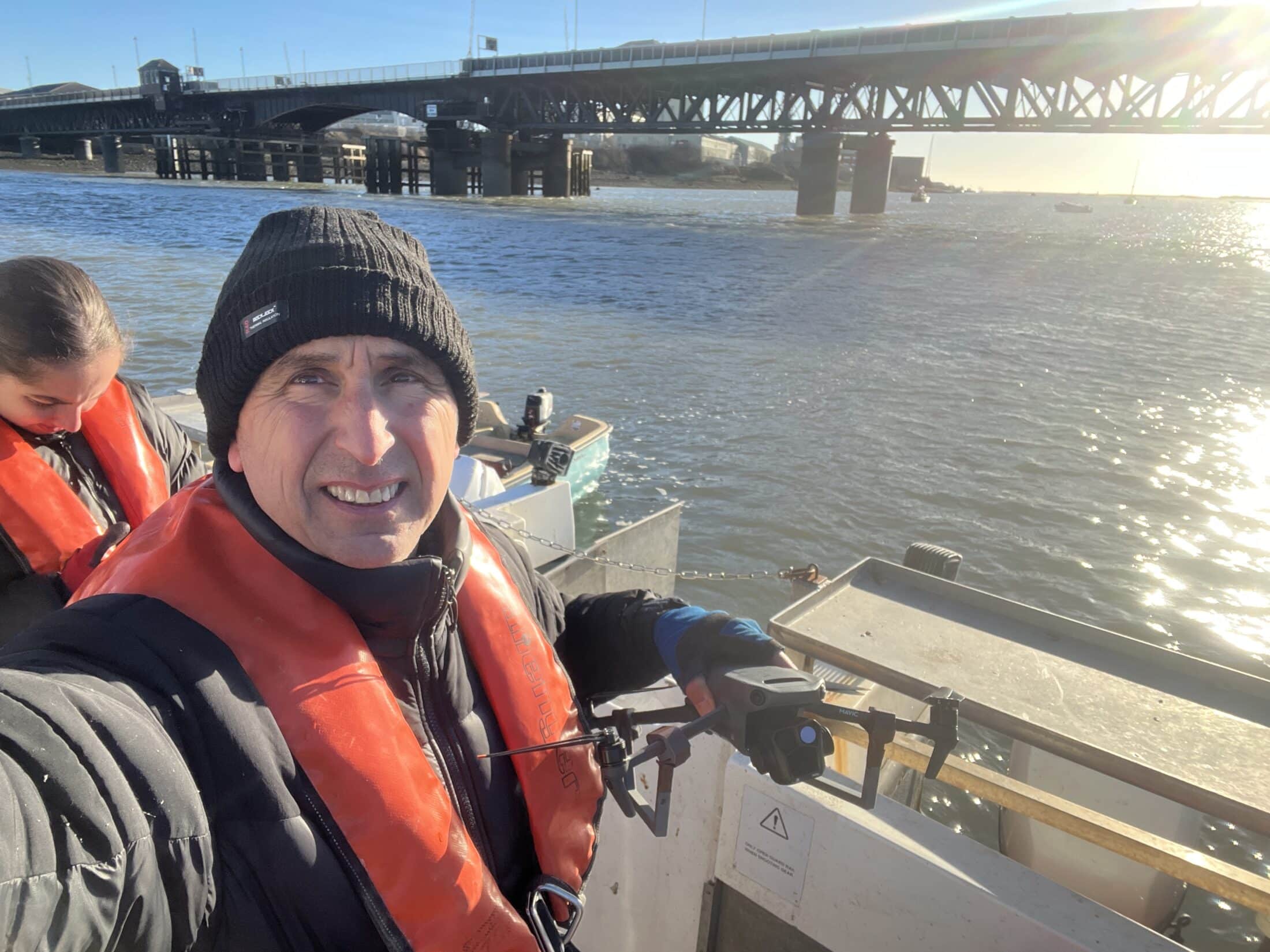
Flying Off Boats: The safe way
Todays Insite into my world of drones is a short tutorial on how I fly my drones from boats which can be very tricky and cause a lot of financial loss when done wrong.
You’ll have seen the YouTube films of people taking off and crashing into the sea or trying to land back on a boat after a flight and either dropping it into the water or hitting something or someone and then dropping into the sea. However, its easy to avoid given the right knowledge from some one who’s done this many times.
Flying for TV on the water.
I’ve flown for countless production companies from boats, and I’ve never lost a drone yet. What I will say is that you also need to have the confidence to say to the production company or client, no sorry I’m not flying today at sea as the weather is not suitable. They may not be happy but at the end of the day it’s your drone that’s at risk and it’s your livelihood and reputation if something goes wrong.
How do I fly drones off boats safely.
If you want to fly off a boat either at sea, a river or canal there’s a few things I do as a matter of course and if you follow my advice, you should have a very pleasant experience and give your client some incredible footage.
What drones do I use.
The kit I use depends on the production company I’m working for but let’s start with the big stuff.
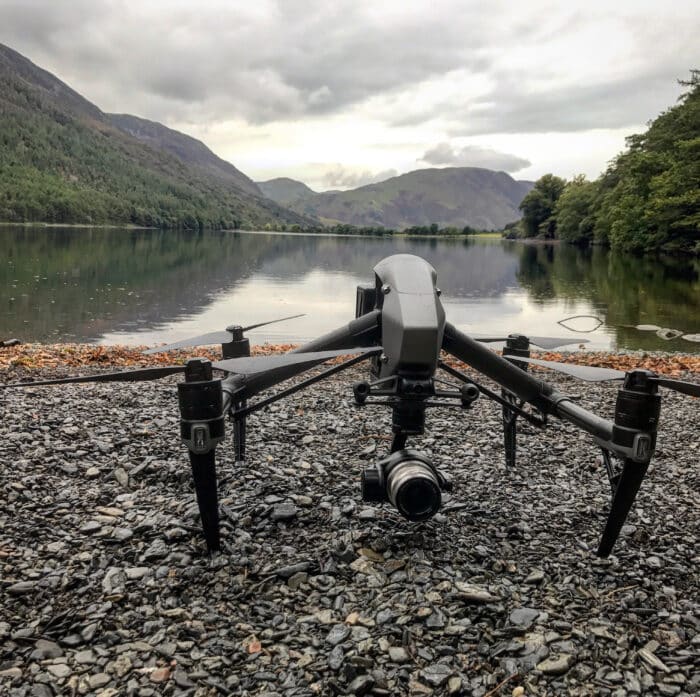
The DJI Inspire 2 for instance has very large landing legs and is super easy to hand catch and we usually fly as a pair. Myself flying the drone and my camera operator holding the drone on take-off and likewise catching it on landing so no major issues there. You just need to be aware of the large propellers which can easily cut into the skin if you’re not too careful. I recommend gloves, goggles (eye protectors) and a hard had just to be on the safe side.
The most common drones flown off boats are going to be the DJI Mavic range. I generally fly the DJI Mavic 3 pro when I’m on water, the DJI Mini is great but for me just a bit too small when you need to pluck it out of the sky.
Here’s a short video of how I fly the DJI Mavic 3 pro from a boat.
Prior to flying from anywhere be it a boat or on land the first thing you do is check the airspace, I use altitude angel, it tells me of any reasons as to why I cannot fly my drone, what permissions I need to fly if its restricted airspace and also how to apply to get those permissions.
Once I’ve done that I’ll write up a comprehensive risk assessment for whoever I’m working for to explain how we are going to fly off their boat and what safety procedures we will have in place in case of an emergency such as a fly away or crash landing.
Then I check all my kit and ensure everything is fully charged from the drones’ batteries to the remotes and even the clients monitor.
I try to charge the batteries fully on the day of filming as you shouldn’t store fully charged batteries due to the dangers involved with lithium batteries. I also carry a Ecoflow battery charger in by vehicle so I can top up batteries on the way to a shoot whilst in my vehicle, just mean I always have power. Never fly a done on a half used battery, it’s not worth the risk.
To make take off and landing super easy I’ve attached a pair of extended legs from UpShots This means if I’m on my own its very easy to catch my DJI Mavic 3 pro by myself although its better if there’s a crew member free to give you a hand.
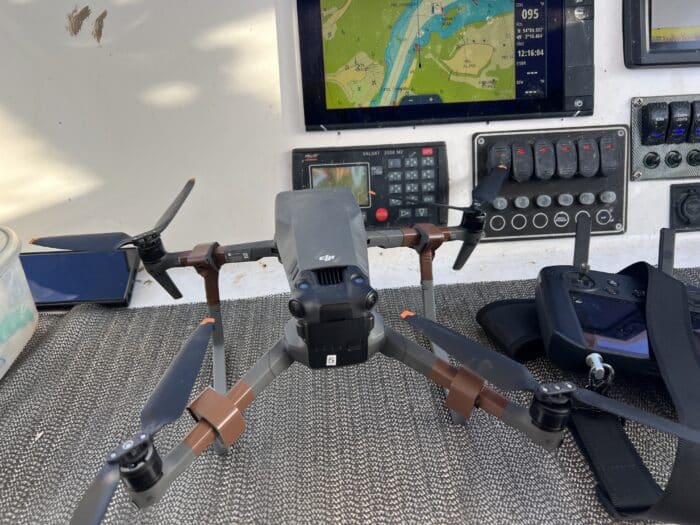
A few things to do once on the boat prior to flying.
- Firstly, ensure your props are on and in good condition with batteries fully charged.
- Check your camera card is in the drone and formatted
- Give your safety briefing to the crew
- Find a safe place on the boat away from crew and no cables above
- Turn the drone on and set your exposure roughly to reduce workload once in the air. Once in the air tweak the exposure to suit. Don’t forget the rules, 25fps, shutter 50th sec iso as low as possible, ND filter to suit.
- Turn off all the collision safety sensors and optical landing sensors
- Set you max limits to No Limits.
- Update your home point when ever safe to do so. Should be set to RC not the take off point.
- Take off by using Auto Take Off whilst holding the drone steady if your on your own otherwise get your spotter to hold the drone and fly up and away.
- Take off facing into wind or at the back of the boat so that when you lift off the drone fly’s away naturally in the wind rather than back into the boat.
- When landing bring the drone in nice and slow, I fly with the drone’s camera pointing away, reversing backwards towards me gently lowering the throttle making nice smooth control movements.
- Keep in contact by telling your crew what you are doing and instruct your designated drone hand catcher when to grab the drone. It’s all about timing. Don’t fly fast as your hand catcher will jump out of their skin and likely drop the aircraft into the water.
- Have a good spotter with you as its easy for the drone to disappear in a big sky. If lost just turn the camera towards your boat and fly back until you can see it once again
Follow these instructions and its happy flying al the way back to your boat.
Flying off a boat is one of the hardest things you’ll ever have to do and it’s not for the faint hearted but if you prepare your kit and do your homework then you shouldn’t have any issues.
Happy flying!
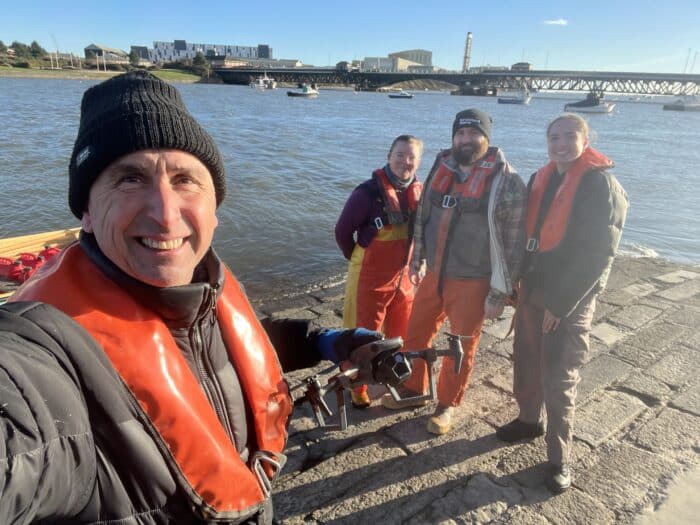
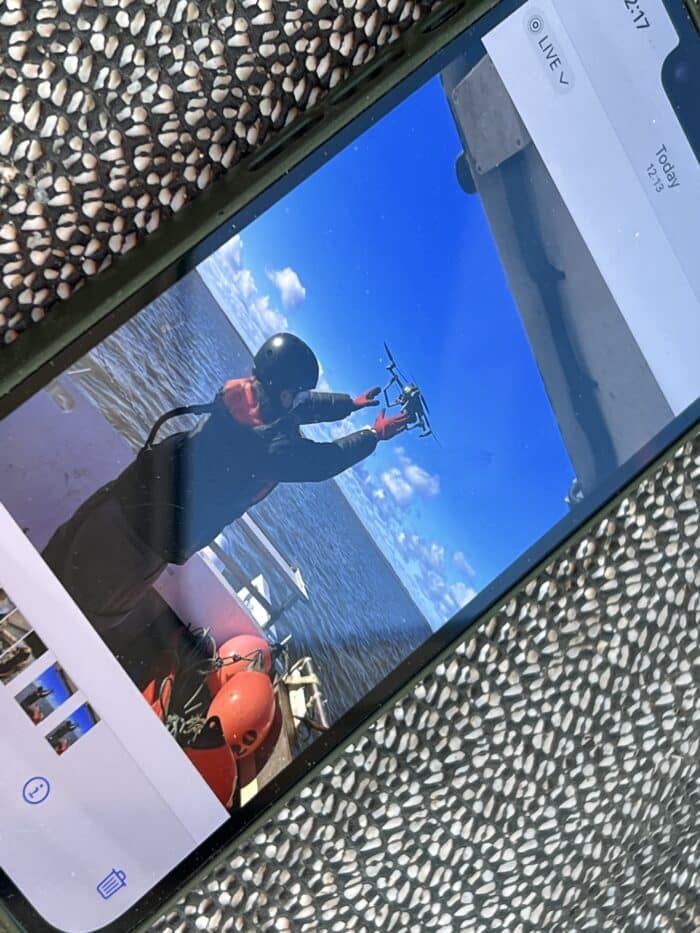
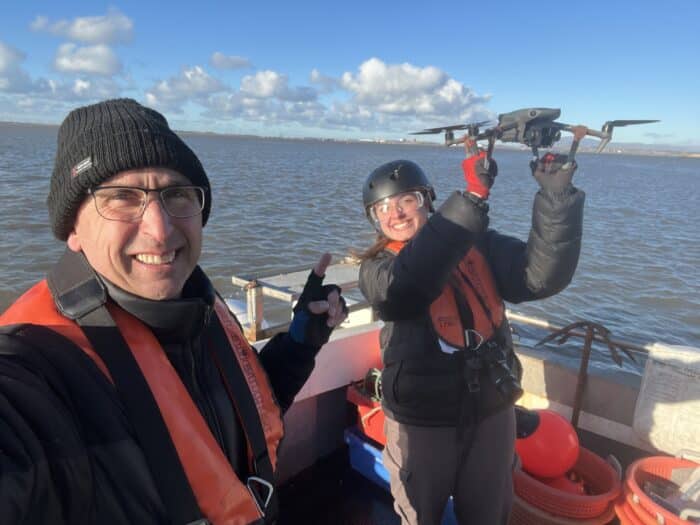
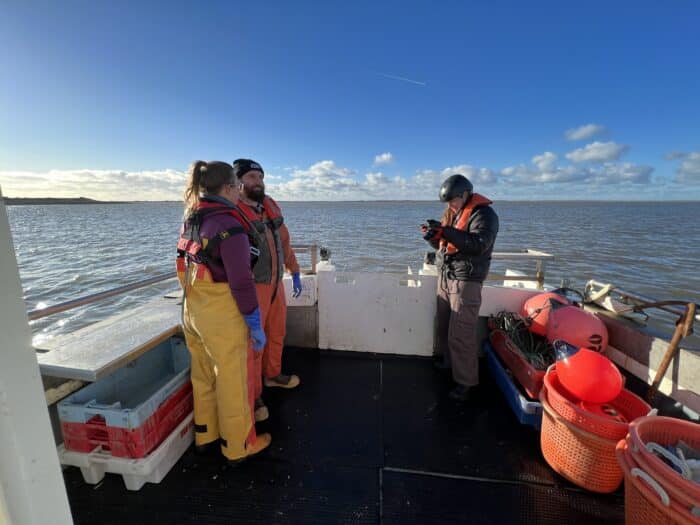
Leave a Reply
You must be logged in to post a comment.